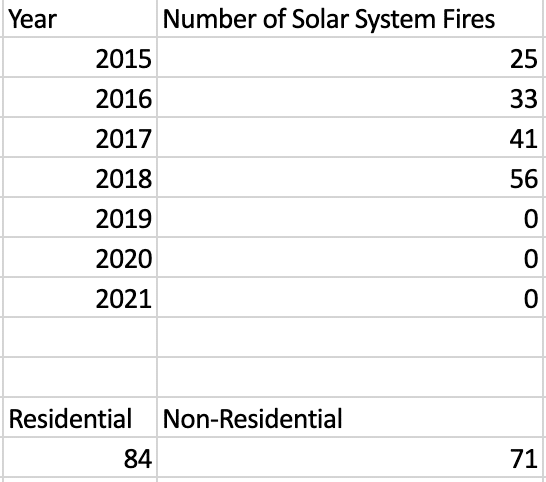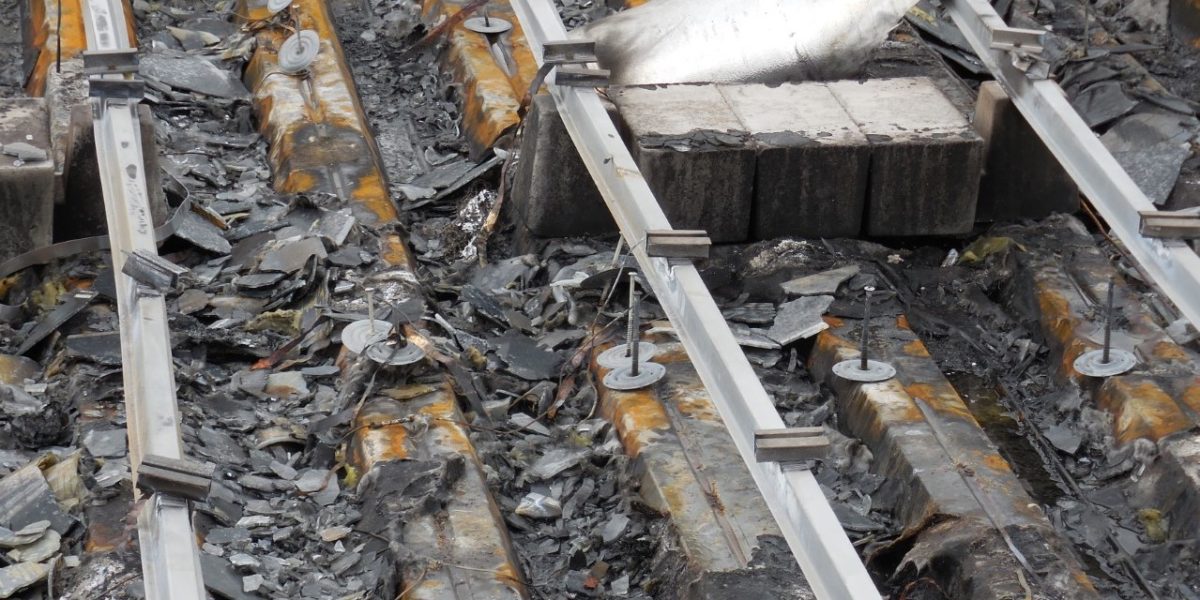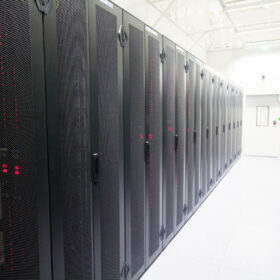In recent years, fires have played a major role in the American energy landscape, with $30 billion in wildfire damages becoming a major factor in Pacific Gas and Electric’s bankruptcy and Wal Mart suing Tesla over Tesla/SolarCity PV installations catching fire at Wal Mart locations in three states.
Last week, 20 solar panels on the roof of an Amazon fulfillment center in Fresno, California caught fire, although the official cause of the fire has not yet been released by officials.
The U.S. Fire Administration (USFA) does not specifically track fires from solar installations, filing them in the administration’s “other” category for causes. However, Lawrence Shaw, owner of Higher Powered, LLC, a company that does residential solar preventative maintenance (PM) in Arizona, reached out to the USFA to request the data.
Shaw found that there were 56 recorded solar system fires in 2018, the most recent year of reported data, which is up 36% from the 41 recorded in 2017. In 2015, the first year that Shaw got data from USFA, there were 25. Since 2015 the Fire Administration has recorded 155 fires caused by solar installations, with 84 being residential systems and 71 being non-residential.

Image: U.S. Fire Administration, Lawrence Shaw
Of those 155 fires, roughly 33% occurred in California, Arizona and Nevada, states which are among the highest when it comes to wildfire hazard potential.
Operating out of Phoenix, Shaw believes that regular infrared (IR) imaging of residential projects could cut instances of fire down immensely. Regular IR testing can identify hotspots on a system that could lead to thermal events down the line.
IR imaging is a technology that many utilities already prioritize and use, with Arizona Public Service (APS) employing it on all utility assets. The company prioritizes the process in its residential interconnection language, including in section 9.5: “Customer shall protect, operate and maintain the GF safely, and in accordance with all applicable laws as well as current and prudent engineering and electric utility operations practices and methods prevailing in the region where the GF is installed.”
This means that since APS employs IR imaging at utility sites, homeowners who own solar are required to have IR scans periodically. However, in speaking with a source at APS, Shaw found that the company’s words don’t always match its actions.

On the roughly 1,000 low-income homes with APS-owned solar on their rooftops, including those in the City of Flagstaff, an area found to be at greater risk of wildfire, aren’t having IR testing done as a part of annual system safety checks. So, while the utility expressly values IR testing, conducts IR testing on large-scale assets and requires it of solar owners under its service, it neglects the systems of low-income homeowners in high-risk areas.
Moreover, Shaw relates that APS’ interconnection language is some of the strictest that he has seen among utilities, leading him to believe that the bulk of residential systems in the United States are not subject to IR testing.
Because of this, Shaw believes that the solar industry sorely needs a standard for residential preventative maintenance includes annual visual inspections and infrared imaging to look for system hotspots.
“Infrared imaging has been proven to identify hotspots before they become more serious in nature,” said Shaw. “This is backed by scholarly literature and decades of data in industries other than just solar. Provided the camera is of sufficient quality and being used correctly, this approach is the surest and best way to detect the 25 known PV module safety defects during a visual inspection.”
This content is protected by copyright and may not be reused. If you want to cooperate with us and would like to reuse some of our content, please contact: editors@pv-magazine.com.









““Infrared imaging has been proven to identify hotspots before they become more serious in nature,” said Shaw. “This is backed by scholarly literature and decades of data in industries other than just solar. Provided the camera is of sufficient quality and being used correctly, this approach is the surest and best way to detect the 25 known PV module safety defects during a visual inspection.””
Very interesting, since the “discovery” of several solar panel manufacturers using PVDF as a back sheet material on solar PV panels as a “standard” practice for around 5 or so years, folks are beginning to find out that PVDF tends to craze, crack and allow moisture to effect the panel after only a few years use. Thanks for the heads up.
I would like to know what percentage of solar system fires have occurred with string-inverter systems vs micro-inverter systems ( DC vs AC wiring). I’m pretty sure that reported fires at large commercial buildings are all string-inverter systems. Micro-inverters are more often found on smaller, residential scale systems, but many residential systems, especially older ones, use string-inverters. Does anyone out there have reliable data on that kind of breakdown?
I don’t believe that data exists–not publicly anyway. For this reason I’ve created a petition for a maintenance program to try to collect this data:
https://www.ipetitions.com/petition/prevent-fires-and-help-renewables
Larry, I have thermal imaging cameras. I’ve looked at PV arrays. I am not convinced that the thermal imaging alone will solve the problem you are describing. Frequently the problem is connectors (not the modules). For many of the roof top installations the thermal imaging (and that done of at the factory) only addresses failure related to the leading and interconnects of the individual cells.
The Tesla PV module recall done with Walmart was traced (if I remember correctly) to failures of the connectors at the end of the wires and not on the back side of the module. Such failures may not be detected alone with a thermal camera — unless the connector itself is so damaged it’s about to fail.
More importantly is the need for accurate reporting and tracking by the USFA. The fire investigation should try to determine the source of the fire – module, connector, combiner, inverter. The story you wrote seems to imply its all modules. But I suspect it’s more likely wiring, connectors, and combiners – all issues related to installation at the site.
I agree with you.
Several surveys and studies on the fire of PV systems (e.g. Germany, Great Britain, Denmark, Italy, Australia) have shown that the fire risk is very low. (Far less than many other electrical applications in homes.)
What these also unveil is, that most causes (in general for failures, not only for fires) are installation faults (poor crimping of DC-plugs, using DC-plugs from different manufacturers which is not allowed, bad contact by not interlocking these plugs, water ingress because of no/poor tightening, poor tightening of terminals, broken ties and moving cables, ….).
So I guess that 1. diligent work and 2. periodical inspections (maybe with a simple IR-imaging/movie of connectors and terminals) are the most useful ways to get and keep a PV-system safely operating.
You are absolutely correct. We need better reporting and more granular data–infrared imaging is only a piece of the puzzle.
Check out this article published when only the 2017 data was available (it talks a little bit more about the data problem):
https://pv-magazine-usa.com/2019/10/29/navy-engineer-wants-infrared-scanning-and-disciplined-data-as-solar-power-standards/
A two year-old leased Tesla system caught fire on my home in Colorado in August 2019. Tesla sent text saying there was a problem and they would have someone to check it in 8 days. The system caught fire the day after the text. My home was saved by landscapers from next door. Brave men of action. Tesla has refused to provide any kind of analysis on the fire, and at this point refused to speak to me or my attorney, and reversed to remove their toxic burnt system from my yard (I had the have roof replaced . The fire was recorded as an appliance fire. The system was not maintained per manufacture specs, a two string system to an inverter. Something must be done to mamadate and track the maintenance of these ratepayer and taxpayer subsidized systems. It will start with data – signing the petition!